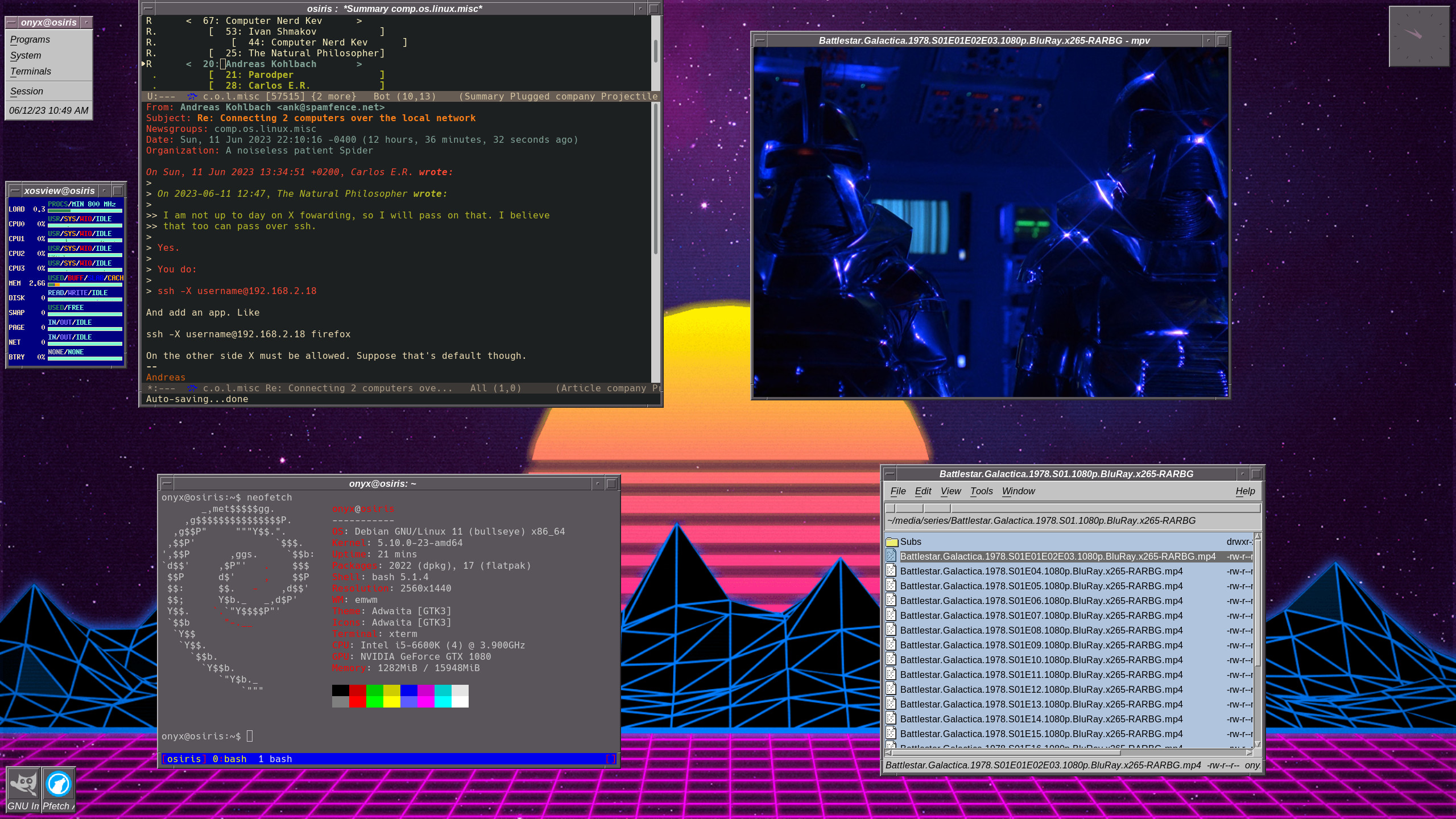What Linux distribution or distributions do you personally use?
I myself am a daily Void user. I used to use Devuan, but wanted to try rolling release and ended up loving Void!
Debian. Several reasons:
- It’s trustworthy.
- It’s not going anywhere. Debian existed when I was a kid and it’ll probably still exist when I draw my last breath.
- I know how to use it, since, once again, I’ve been using it since I was a kid.
- It has all the desktop environments.
- It fully supports systemd. I do not miss the unreliability, slowness, and complexity of what came before that. (Normally I wouldn’t mention this, but your former distro of choice exists solely for the purpose of not having systemd, so it’s relevant this time.)
The thought that Debian will continue into the future feels comforting. How cool it would be if in 5000AD kids on Mars or Europa are running Debian 100?
Arch Linux. Always very up-to-date and the AUR is huge. No dealing with PPAs or snaps or flatpaks or appimages. Just
paru -S any-software-ever-made. Also very streamlined (systemd for everything lol) and well documented. I tried NixOS for a bit but it was very inconvenient in comparison and I felt like it was impossible to tinker with or understand if you weren’t good at Haskell. Terrible documentation.For servers it’s definitely Debian + docker.
I tried NixOS for a bit but it was very inconvenient in comparison and I felt like it was impossible to tinker with or understand if you weren’t good at Haskell.
You don’t need any haskell knowledge to configure a NixOS system. It’s mostly just researching the right options and setting the desired values. Pretty simple. For more advanced stuff like custom modules, functional programming experience helps a lot but that’s not necessary for installing packages and enabling services.
Documentation isn’t great but what it does have going for it is that it’s right in the place where you configure it: In the NixOS options. Wanna configure systemd-boot? Just search for it: https://search.nixos.org/options?channel=23.05&size=50&sort=relevance&type=packages&query=systemd-boot
It’s self-documenting.
I use Debian with a patched version of motif window manager. The 90s never ended:

I was a distro hopper once, then I saw the light of NixOS…
Tell me about it…
The only reason I might, in the distant future, ever consider changing again is this project, which hopefully would be something between NixOS and Qubes. But that is far in the future and not even that certain.
I have a few dozen computers and most run Pop!_OS.
What’s your second most commonly used distro?
Ubuntu for life. Unpopular opinion i know, please don’t stone.
umm it’s literally the most popular distro
And yet everyone in r/linux and r/linuxmemes kept shitting on it
When you take Pop_OS! into account?
Probably not anytime soon haha
arch
btw
same, its pretty solid for a meme os. For anything else I usually use Debian.
Garuuuuuda. Love it. Been running it for the past few years. The devs come off as assholes, but they’re actually just German;)
EndeavourOS on my desktop, Red Hat and Ubuntu on servers(at work).
NixOS everywhere (except for one server which I have yet to migrate from Rocky to NixOS)
Been switching between Arch and Linux Mint for a while now. I run Arch and EndeavourOS on my laptops (Arch on my daily 2-in-1, Endeavour on my TV laptop) but I can’t decide which is better for VR on my main rig… probably because VR on Linux is kinda in a pathetic state anyway lol. Next week I’m getting a second GPU for simple display-out so I can use my 6800XT to run VR in a Windows VM, probably on Arch
Edit: landed on EndeavourOS, basically just Arch with a GUI installer, DE by default, and some other tweaks. It’s what I kept turning Arch into pretty much lol
NixOS. Declarative reproducible immutable systems are the future.
Nix gang
Debian, for ultimate stability, Fedora for every day, and Arch for my project box.
Fedora, because it just works and it ships recent software versions.
I also like Fedora Silverblue, and projects like ublue are very interesting in my opinion.
Could you explain what you find interesting about Silverblue ?
Updates can’t really break anything, and if something would go wrong, I can simply boot on the previous image, which will still be there. They can also happen in the background, such that I don’t even know it’s updating. It just happens and never bothers me.
What’s even more interesting is that you can rebase on another base image without having to worry. If I don’t like it, I can just go back to the previous image. With ublue, you can even customize your own OS image.
I believe modern Android uses a similar concept. They use two partitions, and install an update to the other image while your phone is running normally. Then all you need to do is reboot, and you’ll be on the new boot image.
Fedora is truly awesome project! ❤️
Been using NixOS for a couple months. It’s gotten easier to configure and change because of it, and new computers are super easy to setup because I can just change/apply the config and system wide changes will apply with one command!














